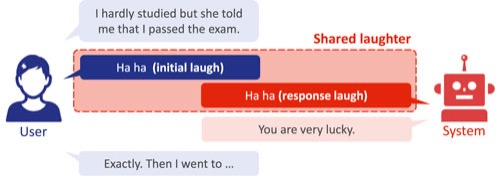Further research is needed – it seems making a robot laugh is quite complicated.
“I thought she was intelligent – she laughed at all my jokes.”
On hearing a friend lamenting thus after a breakup, The Back Page remembers thinking: he really needs to develop a more rigorous intelligence-testing process for prospective mates (perhaps one that includes listening to what they have to say).
The urgency is all the greater for him, we believe, now that there’s a robot that knows when and how to laugh.
You might not think this would top the list of priorities when it comes to designing artificial conversationalists, but researchers from Kyoto University have made it their mission to build an AI laughter model that can judge not only the appropriate time to laugh, but whether to titter politely or snort with mirth. Or as they put it: “detect if the utterance is a laugh, predict if the user should engage in shared laughter, and finally predict the type of laugh that should be used as a reaction”.
The team used speed-dating sessions to acquire their dataset – where better for capturing social laughter cues than a carousel of social awkwardness and desire for acceptance? But rather than harvesting human-on-human dialogue as deep-learning fodder, they put a succession of male students in a room with ERICA the android, who was operated remotely by a number of amateur actresses. So, a very normal social situation there.

They identified and annotated “positive” samples of “shared laughter” – where both parties laughed – classified ERICA’s laughs into “mirthful” or “social” and built a prediction model.
They generated dialogues using the model and recruited 30 people to listen to and rate the ERICA responses for empathy, natural-soundingness, humanishness and understanding, and compared them with control scenarios in conditions of no laughing and reactive laughing (in which the android would laugh whenever it heard the other speaker laugh). On the whole, the shared-laughter model beat the two other conditions.

As the authors point out, “shared laughter in the real world cannot be reduced to a call-and-response mechanism” – so it seems you don’t have to be a struggling standup artist to know how elusive laughter can be. You can also be a roboticist.
At least when our friend resorts to a synthetic girlfriend he won’t need to worry about any of those awkward silences.
If you see something that makes you snort, send it to penny@medicalrepublic.com.au.


